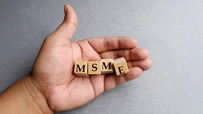Steps to Calculate Your Gold Loan Eligibility
Disclaimer: This blog is generic in nature. For details regarding Gold Loan eligibility, please contact Ujjivan Small Finance Bank.
September 03, 2025

Have you ever considered using your gold assets to secure a loan? Gold loans are an increasingly popular financial solution that allows you to leverage your gold jewellery or ornaments for quick access to funds. Whether you need money for medical emergencies, education expenses, or business ventures, calculating your gold loan eligibility is an essential step in the borrowing process.
In this article, we will explain how to calculate your gold loan eligibility and understand the loan-to-value ratio. By following these steps, you can make informed financial decisions and maximise the benefits of a gold loan.
Steps to Calculate Your gold Loan Eligibility
Let's walk you through the step-by-step process to calculate your gold loan eligibility:
Step 1: Determine the Purity and Weight of Your Gold
The first step is to determine the purity and weight of your gold assets. You can visit a reliable jeweller or use an accurate weighing scale to measure the weight. Additionally, you may be aware of the purity at the time of purchase. However, if you are unsure about the purity level, it is advisable to get it tested by a trusted assayer.
Step 2: Assess the Current Market Value of Gold
Once you know the purity and weight of your gold, you need to assess its current market value. This information is readily available online or through trusted jewellery appraisers. It is essential to consider this market value as it directly influences your loan eligibility.
Step 3: Check the loan-to-value ratio
Check the loan-to-value ratio fixed by lenders. Generally, most lenders have a fixed uniform rate. Currently, it is 75% of the value of pledged gold jewellery.
Step 4: Determine Your Maximum Loan Eligibility
Using the LTV ratio, you can calculate your maximum loan eligibility by multiplying the ratio with the market value of your gold:
Maximum Loan Eligibility = (LTV Ratio/100) x Market Value of Gold
By following these steps, you can calculate your gold loan eligibility and determine the maximum loan amount you can avail. It is crucial to approach multiple lenders and compare their offerings to get the best terms for your gold loan.
Benefits of Calculating Your Gold Loan Eligibility
When you calculate your gold loan eligibility you open yourself to several advantages including:
- To understand how much money you can borrow based on the value of your gold assets.
- Allows you to plan your finances better and align your borrowing needs accordingly.
- Enables you to compare different lenders and choose the one offering favourable terms.
- Prevents overborrowing and helps you manage your debt responsibly.
When you calculate your gold loan eligibility, you can make informed financial decisions and utilise your gold assets effectively.
Hypothetical Scenario: Availing a Gold Loan for Medical Expenses
To illustrate the process of calculating eligibility criteria in a real-life scenario, let's consider Ravi's situation. Ravi's father requires immediate medical treatment, and he needs funds urgently to cover the expenses. He decides to avail a gold loan using his gold jewellery worth ₹3 lakhs.
Ravi's Gold Loan Eligibility Calculation:
| Purity of Gold | Weight of Gold (in grams) | Market Value of Gold |
| 22 carat | 50 grams | ₹3,00,000 |
Ravi wants to know his maximum loan eligibility before approaching lenders. He checks the loan-to-value ratio offered by various lenders and discovers that one lender provides an LTV ratio of 75%. Using this information, Ravi calculates his maximum loan eligibility:
loan-to-value ratio = (75 / 100) x ₹3,00,000 = ₹2,25,000
In this hypothetical scenario, Ravi can expect a maximum loan amount of ₹2.25 lakhs against his gold assets. He matches the other eligibility criteria including age, purity, documentation etc.
Factors Influencing Gold Loan Eligibility
When you calculate your gold loan eligibility criteria there are many factors that can have their influence. Here are some of them.
- Purity of Gold: The purity of your gold plays a significant role in assessing its value. Higher purity gold is likely to fetch better loan terms and higher loan amounts.
- Market Value: The current market value of gold determines how much you can borrow. As market prices fluctuate, it is essential to stay updated on the prevailing rates.
- Credit History: Some lenders may consider your credit history when evaluating your eligibility criteria. However, most gold loans are collateral-based, making them accessible even if you have a low credit score or no credit history.
- Loan Tenure: The duration for which you wish to borrow the loan can impact your eligibility. Generally, shorter tenures result in higher loan amount approvals.
- Income and Repayment Capability: While gold loans are primarily collateral-based, lenders may still assess your income and repayment capacity to ensure you can meet the loan obligations.
By understanding these factors and calculating your eligibility criteria, you can approach lenders with confidence while seeking financial assistance.
Final Thoughts
Calculating your gold loan eligibility criteria is a crucial step in exploring the benefits of using your gold assets for financial assistance. By understanding the loan-to-value ratio and following the step-by-step process outlined in this article, you can determine your maximum loan eligibility with ease. Remember to consider other factors such as purity, market value, and repayment capability when approaching lenders.
Get Gold Loans up to ₹25 lakh at attractive interest rates with Ujjivan Small Finance Bank. Enjoy quick disbursal and a stress-free loan journey. Apply now!
Disclaimer:
The contents herein are only for informational purposes and generic in nature. The content does not amount to an offer, invitation or solicitation of any kind to buy or sell, and are not intended to create any legal rights or obligations. This information is subject to updation, completion, amendment and verification without notice. The contents herein are also subject to other product-specific terms and conditions, as well as any applicable third-party terms and conditions, for which Ujjivan Small Finance Bank assumes no responsibility or liability.
Nothing contained herein is intended to constitute financial, investment, legal, tax, or any other professional advice or opinion. Please obtain professional advice before making investment or any other decisions. Any investment decisions that may be made by the you shall be at your own sole discretion, independent analysis and evaluation of the risks involved. The use of any information set out in this document is entirely at the user’s own risk. Ujjivan Small Finance Bank Limited makes no representation or warranty, express or implied, as to the accuracy and completeness for any information herein. The Bank disclaims any and all liability for any loss or damage (direct, indirect, consequential, or otherwise) incurred by you due to use of or due to investment, product application decisions made by you on the basis of the contents herein. While the information is prepared in good faith from sources deemed reliable (including public sources), the Bank disclaims any liability with respect to accuracy of information or any error or omission or any loss or damage incurred by anyone in reliance on the contents herein, in any manner whatsoever.
To know more about Ujjivan Small Finance Bank Products Visit:"https://www.ujjivansfb.in"
All intellectual property rights, including copyrights, trademarks, and other proprietary rights, pertaining to the content and materials displayed herein, belong
to Ujjivan Small Finance Bank Limited or its licensors. Unauthorised use or misuse of any intellectual property, or other content displayed herein is strictly prohibited and the same is not intended for distribution to, or use by, any person in any jurisdiction where such distribution or use would (by reason of that person’s nationality, residence or otherwise) be contrary to law or registration or would subject Ujjivan Small Finance Bank Limited or its affiliates to any licensing or registration requirements.
FAQs
1. How do I calculate the loan-to-value ratio?
To calculate the loan-to-value ratio, divide the loan amount by the market value of your gold and multiply by 100. For example: LTV Ratio = (Loan Amount / Market Value of Gold) x 100.
2. What is the minimum purity requirement for a gold loan?
The eligibility criteria for purity requirement in a gold loan varies among lenders. However, most lenders accept gold with a purity of 18 carats and above.
3. Can I get a gold loan if my gold is not hallmarked?
Yes, you can still get a gold loan even if your gold is not hallmarked. Lenders may assess the purity using other methods such as XRF machines or fire assay tests.
4. How do I calculate my gold loan eligibility criteria?
The best way to calculate your gold loan eligibility criteria is to do adequate research and approach your lender who can guide you in the process.
5. Can I renew my gold loan if I need additional funds?
Yes, many lenders offer the option to renew your gold loan if you require additional funds. It involves extending the tenure and re-evaluating the value of your gold assets.
6. Do I need a guarantor for a gold loan?
No, a guarantor is not typically required for a gold loan as it is a collateral-based loan. The value of your gold assets serves as security for the loan.
7. What are the documents required for a gold loan application?
The documents required for a gold loan application may vary among lenders. However, common documents include proof of identity, address proof, and proof of ownership of gold.
8. Can I get a gold loan if I am unemployed?
Yes, you can still avail of a gold loan even if you are unemployed. Gold loans are primarily collateral-based, making them accessible to individuals without regular income sources.
Latest Blogs

APK Fraud: How One Wrong Download Could Empty Your Bank Account
May 13, 2025
Picture this. You’re sipping your evening tea when your phone rings.

Gold Loan LTV Ratio Explained (75% to 85%): What It Means for Borrowers
March 20, 2025
In June 2025, the Reserve Bank of India (RBI) introduced a significant relaxation for gold loan borrowers: the maximum Loan-to-Value (LTV) ratio for loans below ₹2.5 lakh was raised to 85%, up from the long-standing cap of 75%. Loans between ₹2.5 lakh and ₹5 lakh can now go up to 80%, while loans above ₹5 lakh continue under the 75% ceiling.

Good Debt vs Bad Debt: Learn the Difference
August 13, 2025
Every month, millions of Indians wait for the familiar debit alert, an EMI deducted from their account.

Got a Tax Refund? 5 Smart Ways to Put Your 2025 Refund to Work
August 13, 2025
For many taxpayers, there’s a unique sense of relief when a tax refund arrives.

Credit Score Not Improving? 5 Mistakes You Might Be Making
August 13, 2025
For most of us, a credit score feels like a silent judge sitting in the background of our financial lives.




